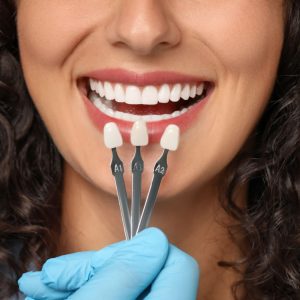Does Tooth Removal Hurt? How to Minimize Discomfort
Tooth removal can make you anxious, especially if it’s your first time. You may worry about pain, discomfort, and what to expect during the procedure. But it’s a necessary step before a tooth replacement and restoration to dental health.
Tooth removal isn’t painful since your dentist uses local anesthesia to numb the area. We explain the process, dispel common fears, and provide practical advice to minimize discomfort.
About Tooth Removal
Tooth removal or extraction is a common dental procedure performed for various reasons, including:
- Severe decay or damage: When a tooth is beyond repair with fillings or crowns.
- Impacted teeth: Typically associated with wisdom teeth that fail to emerge correctly.
- Overcrowding: Sometimes, teeth are extracted to make space for orthodontic treatment.
- Gum disease: Advanced gum disease can weaken the supporting structures of teeth, leading to extractions.
Depending on the complexity, your dentist may perform a simple extraction (for visible teeth) or a surgical extraction (for teeth that are not fully erupted or are impacted).
Does Tooth Removal Hurt?
The thought of tooth removal may conjure images of pain, but here’s some good news—modern dentistry has made the process much more comfortable than you might imagine.
During the procedure, your dentist will use local anesthesia to numb the area so you won’t feel pain, only some pressure or movement. Local anesthesia can be administered as an injection or topically, depending on the type of extraction being performed. For those with dental anxiety, sedation options can provide even more relaxation.
It’s normal to experience soreness or swelling after tooth extraction when the numbing wears off, but you can manage this discomfort with proper aftercare and pain relief methods. You can also expect jaw pain or tightness from an open mouth during the procedure. The key to managing these is to follow your dentist’s instructions and take preventive measures for a smooth recovery.

How to Minimize Discomfort from Tooth Removal
Experiencing discomfort after tooth removal is common, but there are steps you can take to minimize it. By following these tips, you’ll be able to alleviate any potential pain or swelling and have a more comfortable recovery.
Tips for before the procedure include:
- Communicate with your dentist: Don’t hesitate to share your concerns or anxieties. Your dentist can explain the process in detail, discuss anesthesia options, and answer any questions.
- Follow pre-procedure instructions: If your dentist provides guidelines, such as fasting before sedation, follow them closely for a comfortable and safe experience.
Tips for during the procedure include:
- Relax and trust your dentist: Your dentist is trained to make the procedure as painless as possible. Focusing on steady, deep breaths can help calm any nerves.
- Use sedation options if needed: If anxiety is overwhelming, discuss sedation options like nitrous oxide (laughing gas) or oral sedatives with your dentist.
Tips for after the procedure include:
- Use a cold compress: Applying a cold compress to the outside of your cheek for several minutes can help reduce swelling and numb the area.
- Follow pain management plans: Over-the-counter pain relievers like ibuprofen or acetaminophen are usually sufficient. Your dentist may also prescribe medication for more complex cases.
- Stick to soft foods: Avoid crunchy, chewy, or hot food. Opt for soups, smoothies, mashed potatoes, and other soft options.
- Practice good oral hygiene: Rinse with a saltwater solution one day following removal to keep the extraction site clean. Avoid brushing directly on the affected area for at least the first day.
When to Contact Your Dentist
While some discomfort is expected after a tooth removal, contact your dentist if you experience severe pain, prolonged bleeding, or signs of infection (e.g., fever, excessive swelling). These could indicate complications that require professional attention.
Tooth Replacement Options
After a tooth extraction, your dentist may discuss options for replacing the missing tooth or teeth. This is important not only for aesthetic reasons but also for maintaining proper oral health and function.
Dental Implants
These are considered the most permanent and natural-looking options for replacing a missing tooth. A dental implant is a titanium post surgically placed into the jawbone, which acts as an artificial tooth root. A custom-made crown is later attached to the implant, creating a strong and functional replacement tooth.
Bridge
A bridge is created by attaching an artificial tooth to neighbouring teeth on either side of the gap left by the extracted tooth. This creates a “bridge” between these teeth and fills the space with a prosthetic tooth.
It’s important to discuss these options with your dentist and determine the right solution for your specific case. With proper care, these replacements can last for many years and improve both your appearance and overall oral health.
Dental Care Services for Your Needs
Tooth removal doesn’t have to be a painful or frightening experience. Modern techniques and proper care make the procedure manageable for most patients. Understanding what to expect, communicating with your dentist, and following aftercare guidelines are key to minimizing discomfort for a smooth recovery.
If you have concerns about a damaged tooth, book an appointment with South Bolton Dental Centre. We’re here to help make your experience as stress-free as possible.









